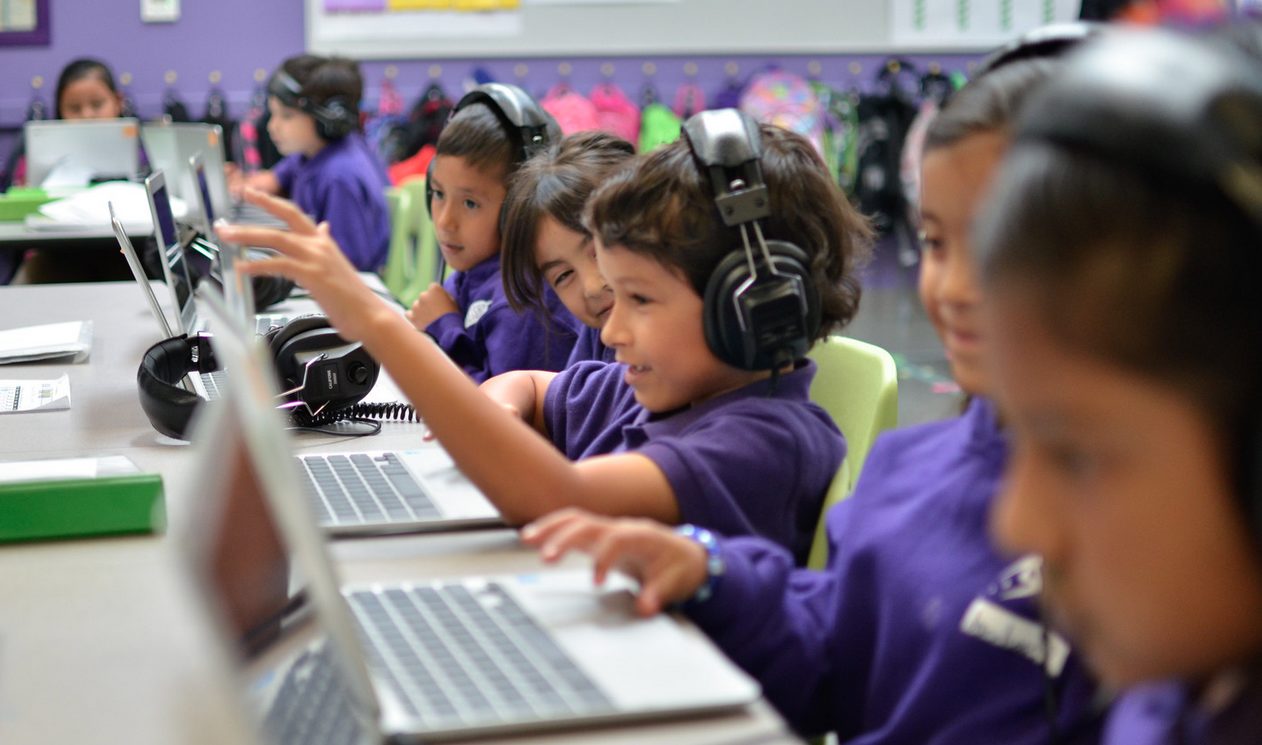
My Reflections on Personalized Learning
by Stephen Pham, Teacher, Sí Se Puede Academy

These two words, blended learning, seem to buzz all over the world of education. It’s essentially a shift in our outdated ways of classroom instruction to an instructional design tailored to each and every student. The ultimate goal of blended learning is to truly personalize the learning experience, ensuring every student receives the right lesson, at the right time in the right modality.
I have had the honor of developing and sharing my practices both at Rocketship and with BetterLesson’s Blended Learning Master Teacher project. This past week, I had the privilege of spending time with the other passionate blended educators during our Blended Learning Master Teacher Project Conference in Denver, Colorado. We came together and reflected on what the blended movement really means. Though I don’t claim to be an expert, here are four of my personal take aways.
1. There is no one model for blended learning.
Every classroom, every subject area, every school, and every community has different needs, and so the best model is the one that works best for them. Unfortunately, there is no one formula for getting personalized learning right, just as there is no one formula for how a student learns. However, with this BetterLesson project, we hope to identify and share some of that best practices that we’ve discovered as we continually improve our blended learning practices within our own classrooms.
2. Strong blended learning systems leverage both teacher expertise and technology.
In some cases, blended learning seems like putting students in front of computers to learn. Though learning programs are continually getting developed to better support student learning, the most effective blended classrooms integrate teacher design. Effective blended educators use student data to carefully curate internet resources on a regular basis, aligning the system with student needs in order to effectively improve student outcomes. Rather than just using the computers as an way to keep students busy, strong blended classrooms use technology to create a synergy of learning from both teacher instruction and online learning.
3. Blended learning helps students develop the skills they need for their future.
I often think of blended learning as the process of teaching students how to learn. Yes, I can teach to the middle with standard lessons about how to add fractions or find the area of a triangle, but it’s much more powerful if they are able to discover the content and learn the skills on their own. A well-suited proverb for blended learning goes, “give a man a fish and you feed him for a day; teach a man to fish and you feed him for a lifetime.” Blended learning pushes students to own their learning and become lifelong learners beyond their years in school. Students become self-driven and responsible, tracking their individual achievements. They learn to find the resources or get the help they need, self-advocating so they can reach their goals.
4. The shift to blended learning isn’t for the sake of using technology; it’s a movement.
Blended learning isn’t just a new fad and a cool way to use technology. Rather, personalizing learning so that every student can access academic content and learn in their own way is a change that means that every student can be successful. Blended learning advocates for every student, not letting them fall into the cracks. Blended educators around the country are coming together, sharing practices and innovations, and collaborating to push the boundaries with instructional design and student outcomes. As more and more educators discover the potential of personalizing instruction and embrace the shift in classroom instruction, the movement spreads, and more students are served.
For more information on the types of blended learning, check out the Clayton Christensen Institutes blended learning definitions, this infographic from an edtech company called Knewton, or this short video from the Learning Accelerator.
Follow Stephen on Twitter @stephenqpham.
Stephen is a fifth grade STEM teacher at Sí Se Puede Academy and a STEM Integration Associate for Rocketship’s network Achievement Team. Stephen is also a part of the BetterLesson Blended Learning Master Teacher Project. He grew up in Southern California and attended the University of California, Los Angeles where he studied biophysics. After graduating, Stephen joined Teach for America and has been teaching at Rocketship ever since, now going into his third year. In his practice, Stephen leverages a blended learning approach to teach math and science, getting students to apply their mathematical reasoning in a variety of ways. Stephen lives in San Francisco and enjoys spending time outdoors with friends.
Published on November 19, 2014
Read more stories about: Education Reform, Most Popular Stories.


